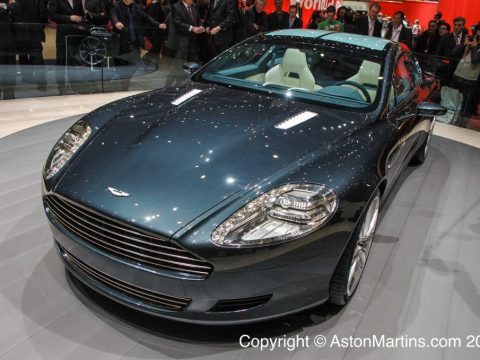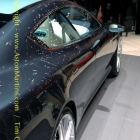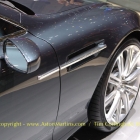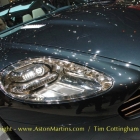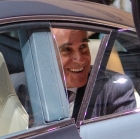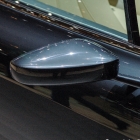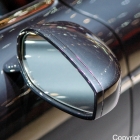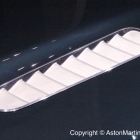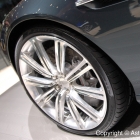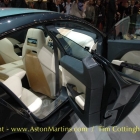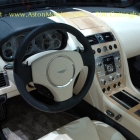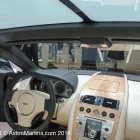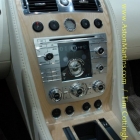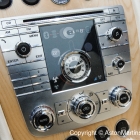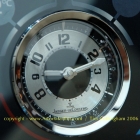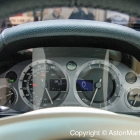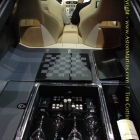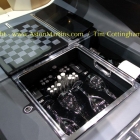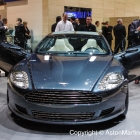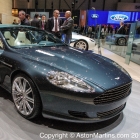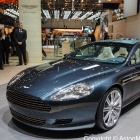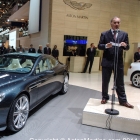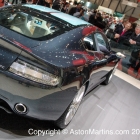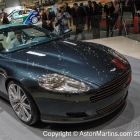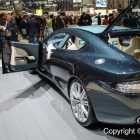This concept came about in an incredibly short period of time. Initial concept sketches were only made in the Summer of 2005 by Marek Reichman, Aston Martin’s new Design Director. Of course it had a great resemblance to the DB9 but, at least to my eyes was so much better, more elegant and distinguished. If you want to believe one article that I have read, the car started as a long wheelbase DB9 with rear legroom where there were previously none to speak of. Despite all of this extra space, the rear lacked true accessibility, so the rear doors (still swan doors of course) were then added. The boot opening became a practical hatchback much like that of the V8 Vantage and made perhaps the biggest boot space on any Aston with the exception of the rare shooting brakes.
The Rapide was also the first concept ever produced in-house within the new Gaydon facility.
The Rapide concept had a number of features unique to Aston Martin. Starting at the very top was a transparent lightweight polycarbonate roof which, I guess was full of liquid crystal and could be made opaque at the flick if a switch. The seats could be folded flat to carry large loads. Stopping the fully functioning concept were carbon ceramic brakes, 18 months before they appeared on the DBS. There were a few details that were showcased on the Rapide Concept such as a new door mirror design, wing vents with integral LED’s, new column stalks and the smart Jaeger-LeCoultre timepiece in the centre console. The headlights were also an all new design with LED’s and projector bulbs but were too ahead of their time to make production. I believe at the time, the technology was not able to make the LED headlights bright enough for road use.
Having been very fortunate to sit in the Rapide concept, I guess you would like my personal view. It was fabulous, no doubt about that and I have no problem in accepting the idea that it’s a sportscar despite having rear doors. The uprated engine would have compensated for the only slight increase in weight. The interior was exquisite; the centre console was all new and so much better than that of the DB9 with the smart Jaeger-LeCoultre timepiece in the centre. The roof was wonderful; the quality of light in the cabin even under the harsh lights of Geneva created a little oasis of calm, shame that at introduction of the production car, it had not been made optional.
I had to sit in the back to give me an idea if this really works as a four seater. It was a bit tight for knee room but I will point out that the front seat was in the fully back position; I had no problem with headroom at all. Getting in and out of the back was tricky as the rear doors didn’t appear to open wide enough, but I was told that this problem had already been identified and was indeed sorted before production. I would say that it was the best interior I had ever seen in an Aston and reminded me greatly of the sort of work produced at Newport Pagnell during the 80’s and 90’s. The boot was vast as you can see with hidden under floor chilled compartments to keep the two magnums of Jacquesson Champagne cool, a chess set and playing cards.
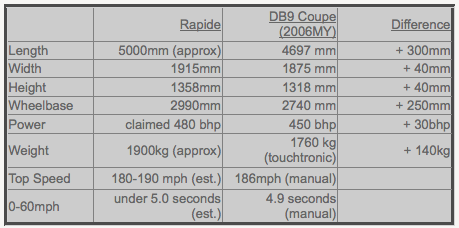 At the time that the Rapide was first shown, we were told it was just a concept and unlike concepts from other manufacturers, this one really was capable of being driven. By late May 2006, Dr Bez confirmed in a magazine interview that AM & Ford had signed off the car for production. With all the other projects that were advanced in 2006 (DBS and V8 Roadster), the production Rapide was not seen until late 2009, and despite trying, AM were unable to beat the not dissimilar 4 door Porsche Panamera to market. Can I thank Aston Martin for allowing me access to the Rapide for photography during the 2006 Geneva Salon.
At the time that the Rapide was first shown, we were told it was just a concept and unlike concepts from other manufacturers, this one really was capable of being driven. By late May 2006, Dr Bez confirmed in a magazine interview that AM & Ford had signed off the car for production. With all the other projects that were advanced in 2006 (DBS and V8 Roadster), the production Rapide was not seen until late 2009, and despite trying, AM were unable to beat the not dissimilar 4 door Porsche Panamera to market. Can I thank Aston Martin for allowing me access to the Rapide for photography during the 2006 Geneva Salon.
Little known fact – there is a little part of this website in the Rapide concept. One of the two packs of playing cards provided in the boot are a set of AM themed ‘Top Trumps’ with some of photographs from this site. If you would like a set of cards, they are available separately from the official factory website.
In 2019, this car became part of the AMHT Collection, on long term loan from Aston Martin Lagonda



